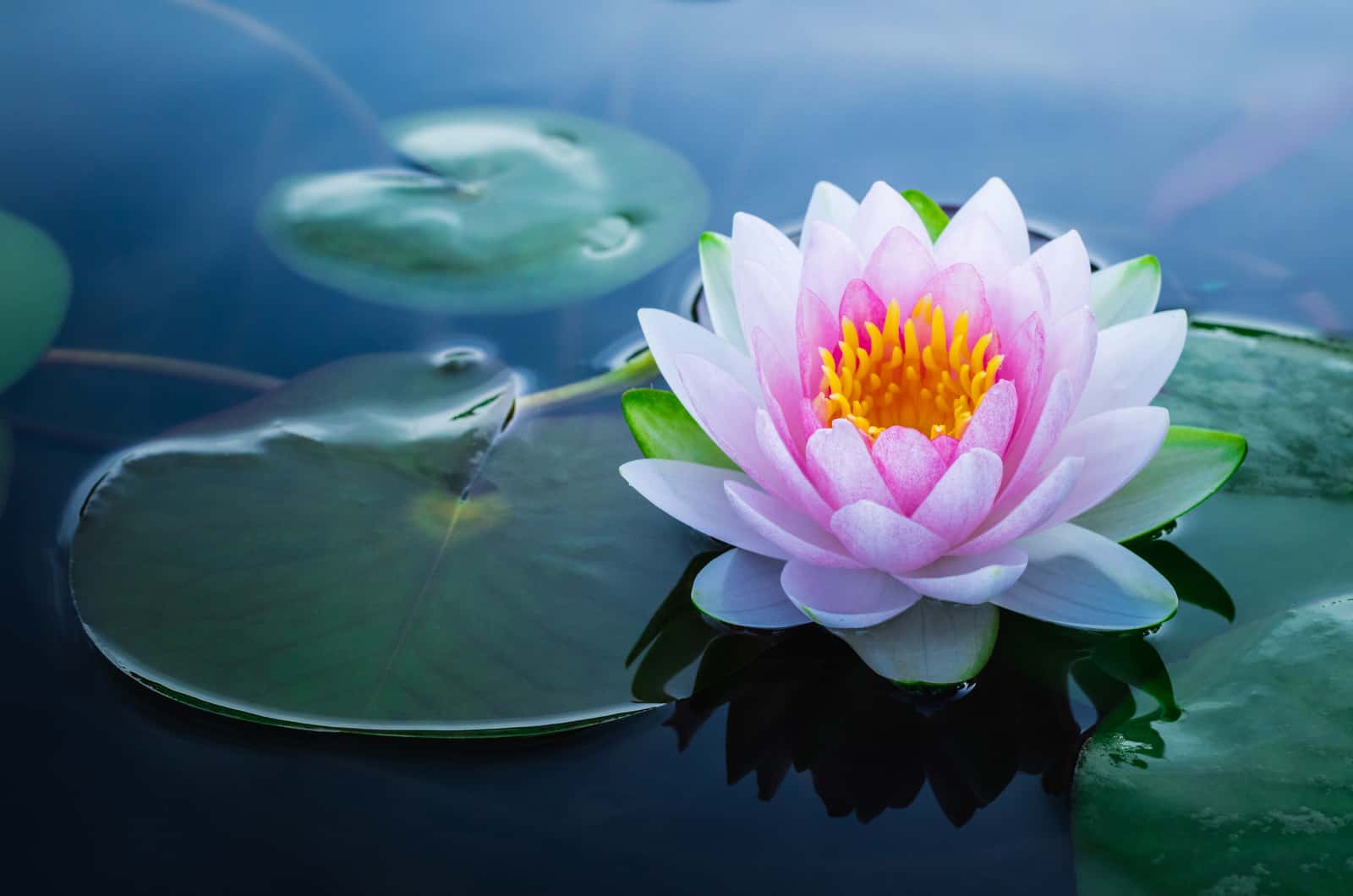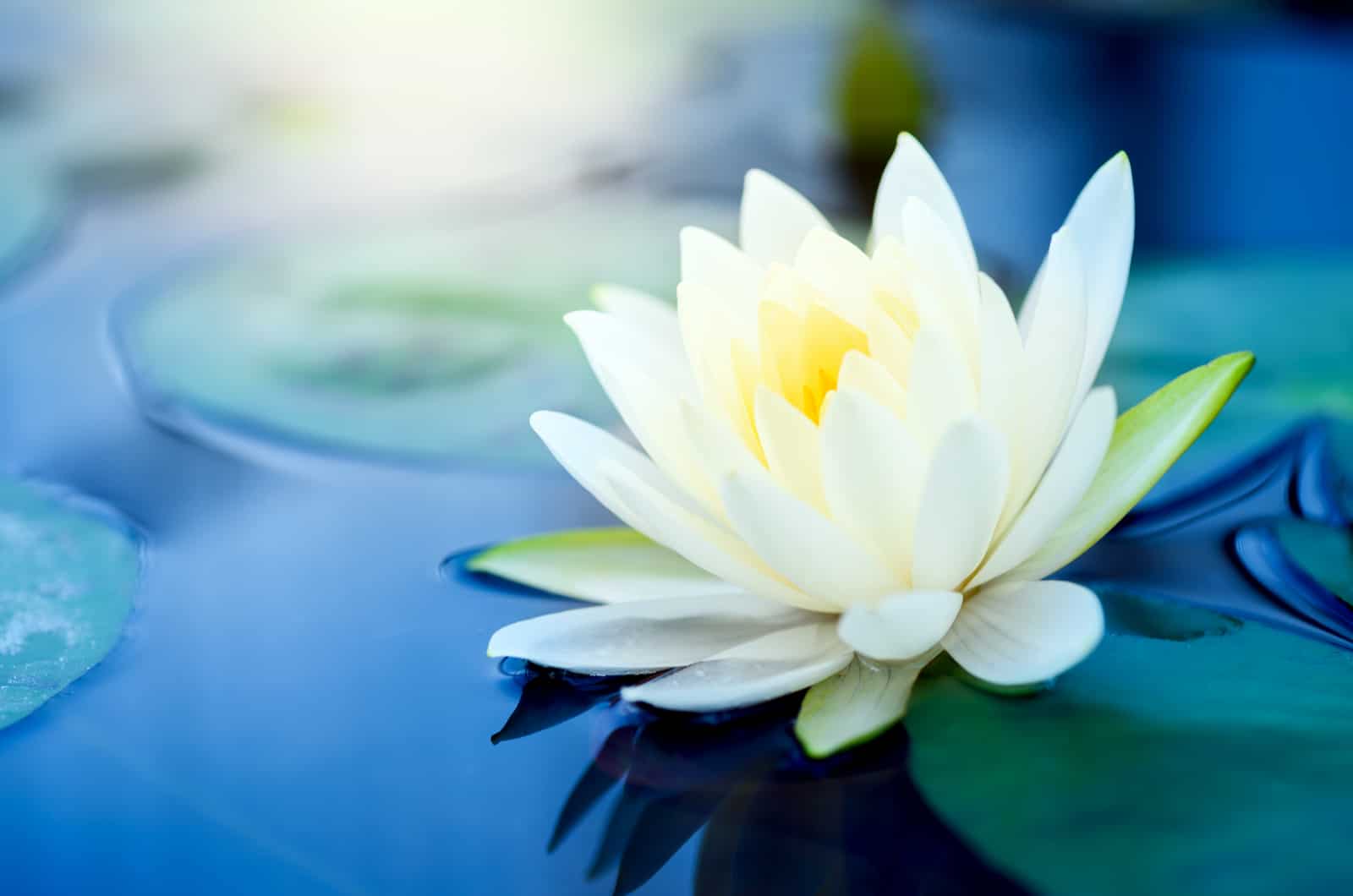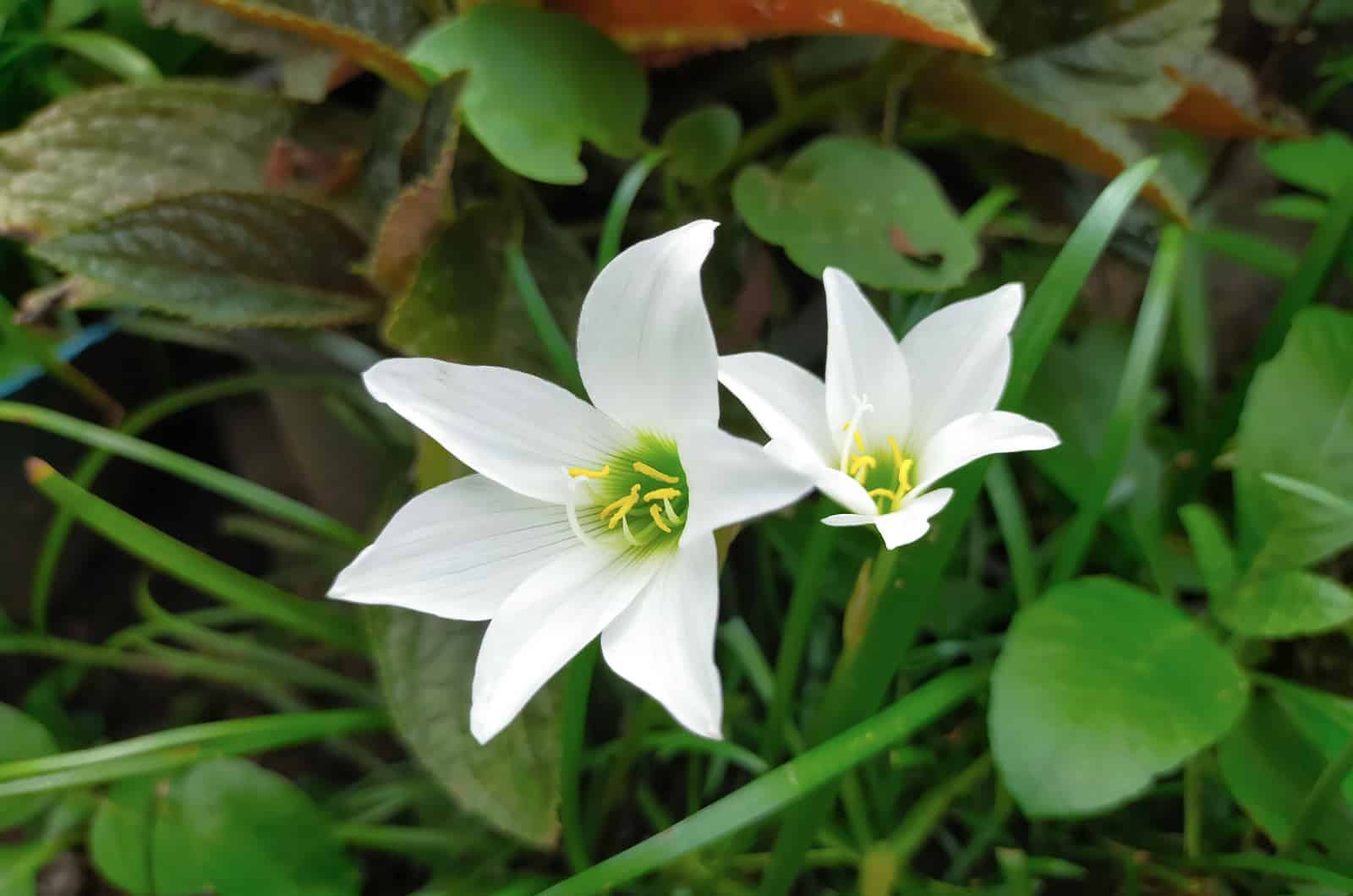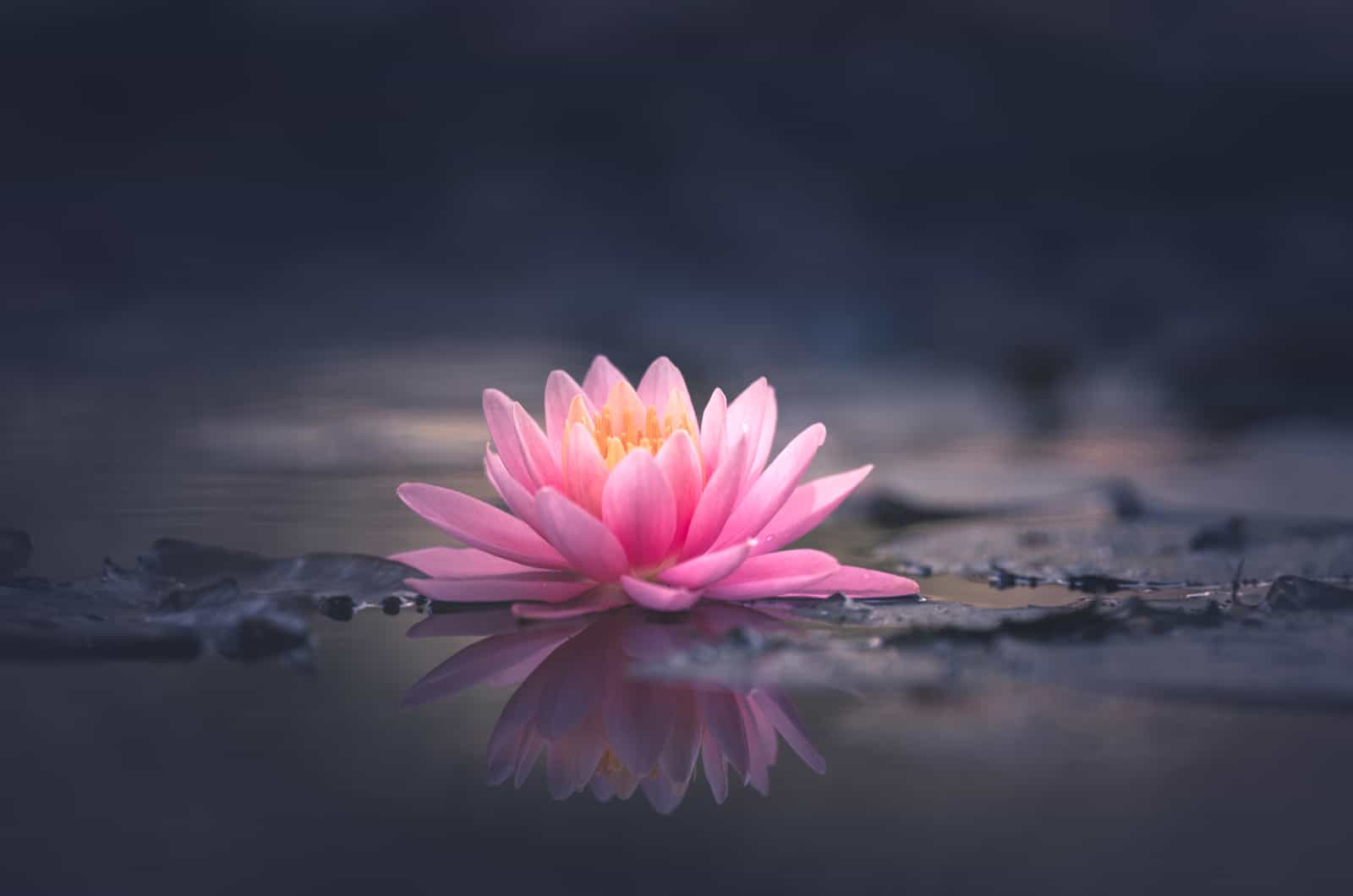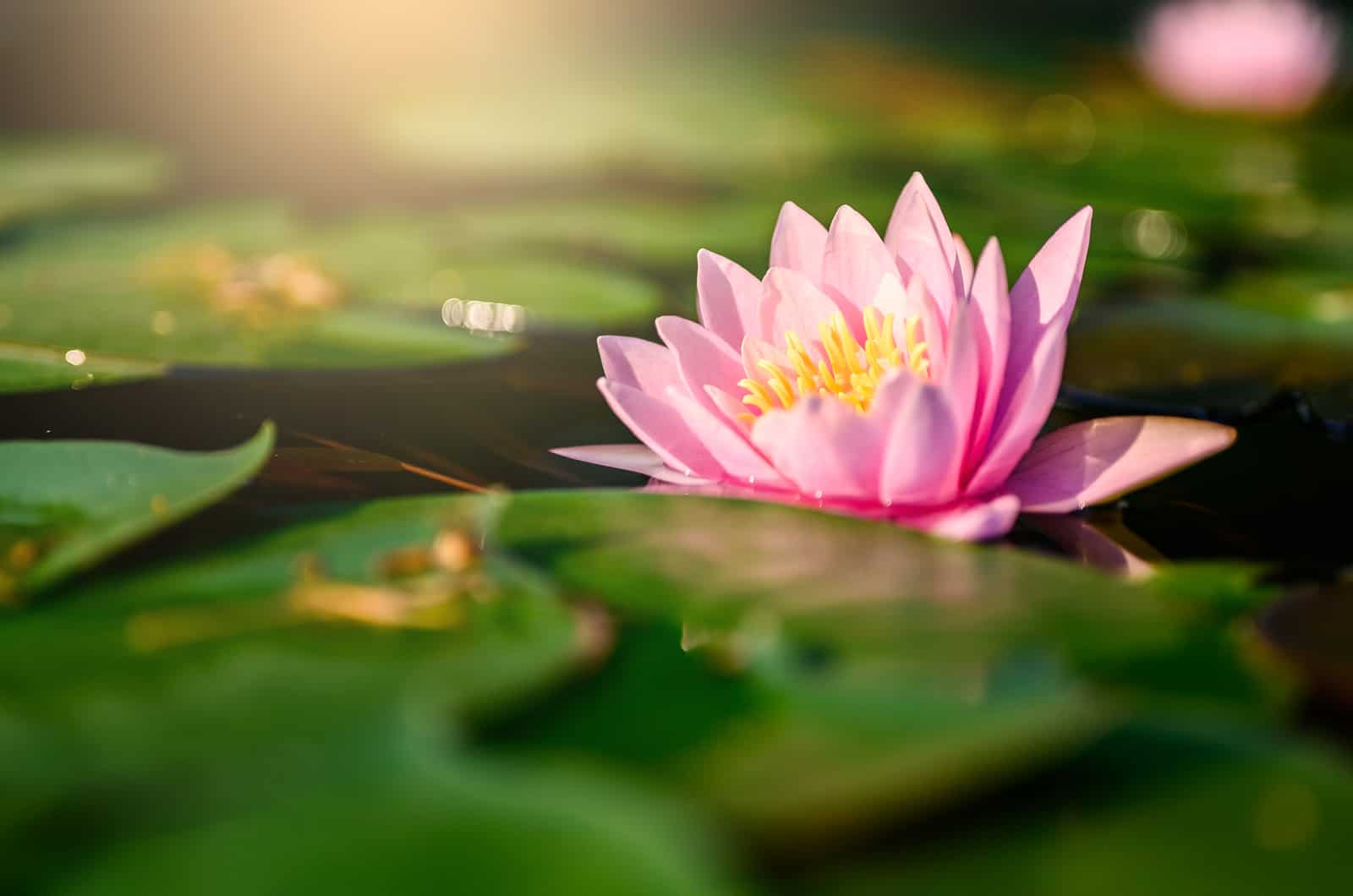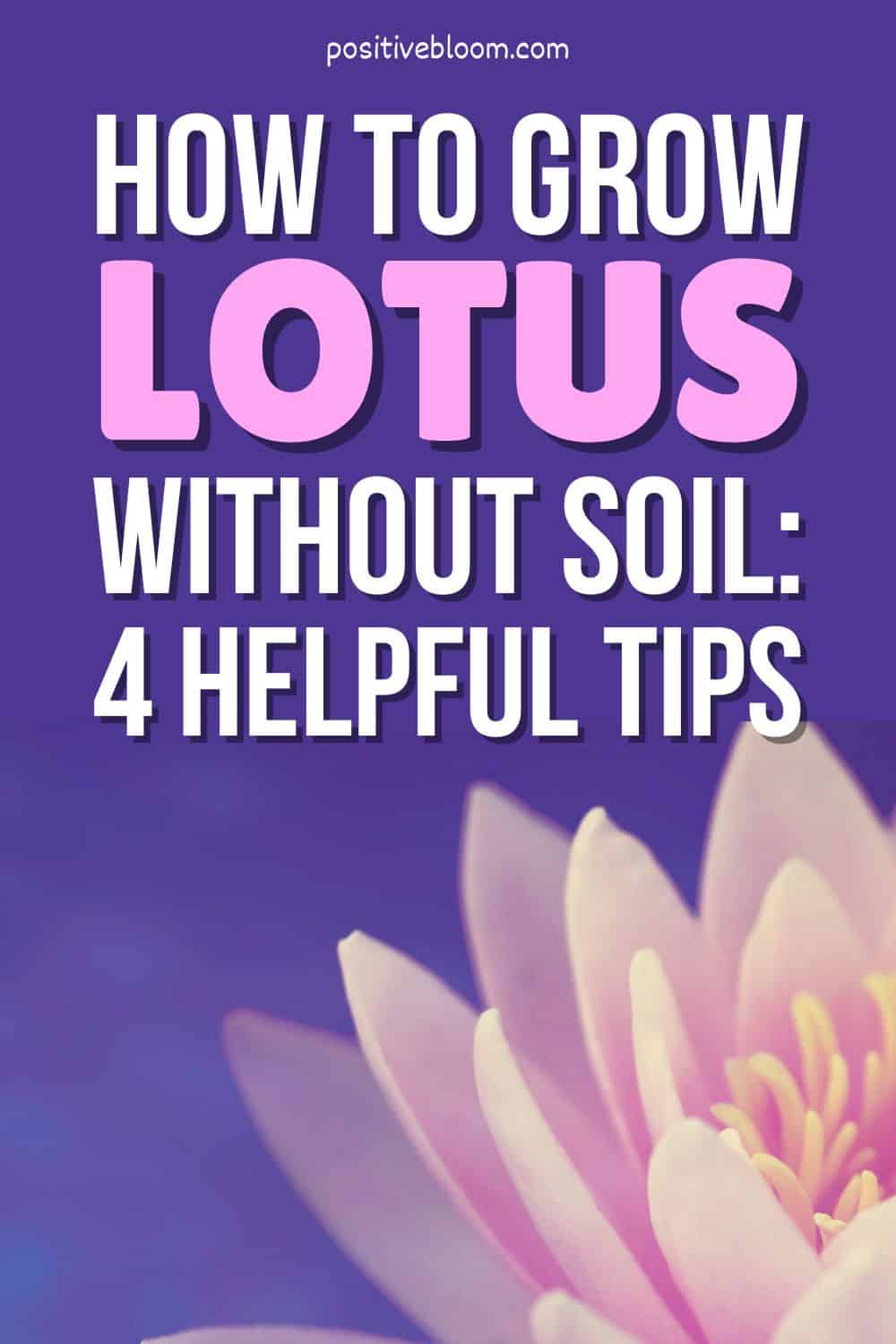Positive Bloom is an Amazon Associate and we earn from qualifying purchases through these links at no extra cost to you.
The lotus flower is an aquatic plant, and we often see it in artificial ponds. So, the title question, “How to grow lotus without soil?” may seem a bit odd.
The thing is, the lotus can benefit from a good potting mix even though you usually see it in a water garden.
Before we get into the specifics of growing a lotus, let’s learn more about the plant itself:
[table id=192 /]What surprised me the most about lotuses is their size. Lotuses are rooted in the pond’s soil where they grow, so they do need soil.
However, they can grow without soil if you meet their requirements, and in the following article you will learn about growing lotuses with and without soil.
You can also find a lotus care guide to help you successfully grow your own lotuses.
How To Grow Lotus Without Soil
Some plants don’t need soil in order to grow, and this method is called hydroponics. Lotus plants are one of those plants that technically can be grown without soil, although they require much more care so we wouldn’t recommend this technique to beginners.
However, if you want to give it a go and improve the aesthetics of your home, you can try growing lotuses in glass vials, bottles, jars, and other containers. Lotus definitely makes one of the prettiest plants grown in glass jars.
This section contains four tips for growing lotuses without soil, so stick around if you want to accentuate the beauty of your water plants!
Fill A Glass Jar With Water
The Lotus is an ideal flower to grow in a glass container as it doesn’t mind excess moisture, although you need to be wary of the water level.
You should grow your dwarf lotus in shallow water, preferably between 2-12 inches (5-30 cm) deep so it can warm up sooner and ensure the necessary temperature for your plant.
Larger lotuses, on the other hand, can be grown in a body of water at least 1.5 feet (45 cm) deep. However, they have a distaste for cold water, so don’t grow them in too deep water.
You should change the water every 3-4 days or whenever it gets cloudy, and always fill the container with warm water as it will promote the growth of your sacred lotus.
Support The Roots
The next thing you need is something to hold the tubers in position and stop them from rising to the surface of the water. You can use some white stones or fine gravel to keep the lotus roots in place, which serves both an aesthetic and practical purpose.
Expose The Plant To Sunlight
Sunlight is vital for all plants because they cannot photosynthesize without it, which is how they produce the resources they need for growth. It is even more critical for plants not grown in soil as they need all the help they can get to be healthy.
Therefore, you should keep your lotus in a sunny spot where it can get at least six hours of sunlight each day.
Ensure Proper Nutrition
If you want your lotus to survive in water, you have to make sure that it doesn’t miss the soil, which means you should give it all the nutrients it would normally get from it.
That’s why frequent fertilization is crucial. However, you don’t want to over-fertilize your plant, so only use half of the recommended dose the first few feedings.
We must add that you shouldn’t fertilize a lotus if there are no aerial leaves as that can kill your plant and undo all the hard work you put in.
Finally, use pond tablets or a granular fertilizer every three weeks during the lotus growing season, which usually starts in June and lasts until August. If you notice that your plant isn’t growing as it should, you should increase the dosage.
Remember, your lotus doesn’t get any minerals from the soil, which is why you have to do the job of supplying it with the necessary nutrients!
Can You Grow A Lotus In Soil?
Yes, you can grow a lotus plant in soil. Lotus tubers and roots are actually buried in the substrate, from which they take all the nutrients they need.
Growing a lotus in soil is far easier because you don’t have to constantly worry about whether you have given it enough fertilizer. The only requirement is not to use potting soil.
Don’t get me wrong, there’s nothing wrong with this type of growing substrate, but it would only float to the surface of the water and leave nothing to hold the lotus roots in position.
The good news is that you can get a growing medium specialized for pond plants and keep your lotus happy, healthy, and strong.
How To Plant Lotus Flowers
Step 1. Before planting a lotus, you have to decide on the medium and the container you’re going to use. You should choose a pot without drainage holes as they defeat the whole purpose of growing a lotus in water! Also, if you didn’t opt for a dwarf lotus you should choose a larger container that can fit the entire plant.
Step 2. Start by adding some sand to the bottom of the container, place some clay soil on it, and then top it all with pea gravel to stop the soil from rising up to the surface. If you have a larger lotus variety, you can place the soil in a container or bucket, fill it with water, and then place everything in a larger container that you’ll fill only with water.
Step 3. Make a hole in the soil so the tubers can fit in it, ensure that the tips are facing upwards, and cover them with a few more inches of the soil, but don’t push it or it may break the tubers.
Step 4. Now we get to “watering.” Slowly add a few inches of water to create mud. Remember, the standing water shouldn’t be dirty or muddy, which is why you have to be extra slow and careful when adding it to the container.
Step 5. Now you’re done with planting, but you’ve still got a way to go! The lotus likes warmth, so you should keep the pot indoors or anywhere the cold can’t harm it.
Don’t worry if you can’t find a spot exactly like that because heating mats can help.
Step 6. The good news is that you don’t have to expose your newly planted lotus to sunlight, so you can keep it anywhere that’s warm. However, once the lotus leaves appear, you should move it to a sunny spot because your plant is now equipped with everything it needs to photosynthesize and produce its own energy and food.
Step 7. The last thing is to monitor the growth of your lotus. When you notice your plant growing, add a few inches of water so that the leaves (and later flower heads) are always on the surface of the water (just like in the movies).
What Are The Benefits Of Lotuses?
Lotus’ health benefits are myriad, and its seeds can be used to treat inflammation, insomnia, diarrhea, and more.
This plant has enzymes with anti-aging properties and can help with heart disease and even manage diabetes. It is rich in vitamins A, B, C, and E, and contains sodium, potassium, magnesium, and carbohydrates, so who wouldn’t want to grow one in their garden?!
Lotus Care Guide
Now that you have all the necessary information about growing and planting lotuses with or without soil, it’s time to learn more about its basic requirements.
This section brings you some great lotus growing tips that you can implement any time, like how much light and water this plant needs, how to propagate it, and in which climates it grows best, and more.
Let’s get started!
Light Requirements
Lotuses are light-loving plants that need full sun to thrive and produce their wonderful blooms that you’re dying to see. Therefore, you should place your potted plant where it can get at least 6-8 hours of sunlight each day.
It can handle some shade, especially if the weather is particularly hot, but you’ve got nothing to worry about if you don’t live in a desert climate.
Water And Humidity
The lotus is a water plant, but if you don’t have a pond to grow it in you don’t have to build one just to have a place for your lotuses. I mean, you can, but there’s no need when you can buy pots without drainage holes.
Simply ensure that there is water above the soil level and your plant will be as happy as if it were in a pond. However, the amount of water is not the same for all lotuses.
Whereas smaller lotus varieties require only a few inches of water above the soil, larger types will need at least 8-10 inches (20-25 cm), so find a deep container and don’t forget to account for the soil.
Make sure you refill the container every once in a while because water evaporates and the plant absorbs a fair amount.
Finally, if you notice that the water becomes muddy, cloudy, or oily, just replace it with fresh.
Humidity
The lotus is a tropical plant, so it doesn’t mind higher humidity levels. (What gave it away? The fact that it can only survive in water?)
However, as it needs plenty of water to survive, you don’t have to mist it or put it on a pebble tray to increase humidity. The water from the pot already evaporates and raises the air moisture, and any additional effort to raise humidity would be futile.
Temperature
This plant definitely prefers warm conditions. The temperature should be kept to at least 75°F (24 °C) during its growing season.
Things change once the cooler weather approaches, however. The lotus is a perennial, which means it will live for many years if you care for it properly. It can survive freezing temperatures for a while, but it cannot tolerate being exposed to subzero temperatures for long periods.
How To Overwinter A Lotus
If you want your lotus to see many summers, you should ensure it gets proper care once it enters dormancy. There are different ways of overwintering your lotus plant, and in this section, we’ll examine the three ways we know work.
Overwintering An Outdoor Lotus
If you grow your lotus in a pond, you don’t have to start panicking once the winter approaches. Simply remove the wilted leaves, lotus pods, and flowers, and prune the stem so it’s approximately 10 inches (25 cm) above the water surface.
It is essential not to cut the stems below the water level because they’re hollow, and the water would get into the plant and drown it if you did.
For dwarf lotuses, you can shorten the stems to 5 inches (12.5 cm) above the water.
Once the weather warms up, the lotus will wake up and start growing again.
Overwinter An Indoor Lotus
For an indoor overwinter, you simply have to take the lotus container indoors and leave it somewhere where there’s not too much light and temperatures don’t exceed 50°F (10°C). Light and warmth would wake and weaken the plant, so it won’t be able to grow when the time comes.
Of course, when spring comes and the weather is warm enough, you can move your lotus plant to a sunny spot, but not before the last frost date has long gone.
Harvesting Tubers
Finally, you can harvest the lotus tubers and store them over the winter. The first step is to remove all water and soil so you can see the tubers.
Harvest the ones with at least two growth tips and leave the rest in the pot (you can overwinter them inside).
Clean the tubers thoroughly and store them in the fridge (you can put them in a crisper drawer so they’re not in your way). Plant the tubers in spring and enjoy your new water garden!
Here’s a video that shows you how to harvest lotus tubers properly:
Soil And Fertilizer
The soil needs to be heavy, so if you forgot to buy potting mix designed for pond plants you could always make your own by mixing clay soil or heavy topsoil with sand.
The soil doesn’t have to be particularly rich in organic matter as that would only create more problems, like the rotting of the rhizomes. That’s actually good news because you won’t have to make any amendments to the soil.
Finally, once you realize how long it takes to make compost, or rather how fast you can make it, you’ll be making it all the time! You can even add some to the growing substrate for your lotus, just don’t overdo it.
Fertilizer
You should start fertilizing your lotuses once they develop aerial leaves. The best thing you can do is fertilize this plant once a month or every three weeks to promote lush growth.
The good news is that there’s a fertilizer specially made for aquatic plants, and we like this one that’s available on Amazon:
Propagation
Owning a lotus plant is great, but a pond or a water garden is a whole other level of beauty. Thankfully, you don’t have to buy new lotuses every time you want a new plant because you can simply propagate it.
In the following section, we’ll explore two successful ways of propagating lotuses.
Propagating A Lotus From Seeds
If you come across some lotus seeds, don’t throw them away because you can use them for growing new lotuses and enriching your garden.
First, you’ll need to cut one side of the lotus seed and place it in a bowl of warm water. After just one day, the seeds should bloat twice their original size and sink to the bottom of the bowl or a jar. Any that remain floating are infertile in most cases.
In about five days you should see a long sprout emerging from the seed. Change the water every day and be careful with the lotus seedlings as they’re incredibly delicate.
Once the seedlings are 6 inches (15 cm) long you should plant them in the soil. Gently push them into the substrate and cover them with soil. Place the bucket into a larger pot or pond and you’re done!
You can still have a lotus pond if you live in a colder climate, you just need to make sure that the water is somewhat shallow so it can heat up faster.
You can watch this video to learn how to propagate a lotus from seeds:
Propagating A Lotus From Tubers (Rhizomes)
If you have harvested tubers and stored them in your fridge, you can take them out in spring and plant them.
You should first soak the tubers in a bowl of warm water between 75 and 85°F (24-29 C, and keep them in a well-lit spot out of direct sunlight, which can hurt the rhizomes. Change the water once or twice a week so it’s never murky.
Lotus tubers can grow to be huge, so you should limit them with something before planting them in your pond. Placing them in a container 3-4 feet (90-120 cm) in diameter is an excellent way of ensuring it doesn’t invade your entire pond.
Choose a round bucket or pot so the tubers don’t end up stuck in the corners, which can kill the plant. Fill the container with a potting mix good for lotuses and gently press the rhizome into the soil. Secure it with gravel or small stones, but don’t bury it in the soil as that can kill it.
And that’s it! Your lotus is all set to be transferred to a pond or larger container.
Pro tip: If you plan on growing your lotus in a pond, use pond water once it gets warm enough.
Repotting
If you’ve bought a lotus from a nursery, you should repot it into a larger container the following year.
The rhizomes don’t respond well to repotting, so you should do it only once, which is why you want to make sure it’s right the first time.
Repot the tubers in spring when the growing season is just starting so the plant has plenty of time to acclimate to its new home before winter. Fill the bucket with clay, top it with sand, place the rhizome on the sand, and slightly press it in, ensuring that the growing tip is not buried because that will kill it.
After that, place the bucket in a standing body of water like a pond or large container which gets plenty of sunlight, and you’re done.
FAQ
We’ve been asked many questions about lotuses, so we decided to answer some of the most common ones and help you resolve all your dilemmas.
Let’s see what you asked us!
Can you grow a lotus in the sand?
Lotuses can grow in just about anything, including soil. In fact, the best growing medium for this water plant is 60% clay covered with 40% sand.
What are some plants that grow in water?
Some of the most common plants grown in water are lotuses and water lilies, but there are some indoor plants that may surprise you.
For instance, a curly spider plant ‘Bonnie’ prefers soil over water, but it won’t die if you suddenly get a wish to improve your home decor and grow it in a glass vessel.
Other plants that can survive the same treatment are African violet, pothos, Chinese evergreen plant, peace lily, fiddle leaf fig, etc.
Summing Up
This article explored whether it is possible to grow lotus without soil. Of course, the lotus is a pond plant and you can only grow it in water, although it requires much more effort as you need to ensure it gets all the nutrients it needs for growth.
It is much easier to grow in soil, which is why we included some tips on planting lotuses and how to care for them so you can enjoy this beautiful (and healthy) plant for many years to come.
Until next time!
Like this post? Share or pin it for later!

